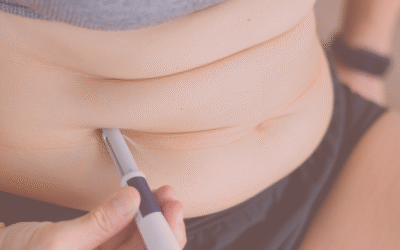You may have noticed that on several occasions I have alluded to the mysterious diets called GAPS (Gut and Psychology Syndrome) and (because I must love abbreviations) SCD (Specific Carbohydrate Diet). I also mention a lot about healing the gut, flooding the gut with probiotics (in posts like Going Against the Grain or The Second Brain) and giving my body ‘healing’ foods. Confusing perhaps?
So here is my small introduction to GAPS, with the aim of removing the mystery around this weird sounding diet plan.
Please note this diet plan is designed for those with more acute health problems (autism , schizophrenia, depression, IBD’S , ADHD etc) and is not necessarily a diet I would recommend to everyone, since our bodies are all different. But because of my history of digestive problems (read about it here) and other health issues, I felt this was a good choice for my body and stage of life.
What is it?
GAPS is a way of eating created by Dr Natasha Campbell-Mcbride, who after years of working and treating children with autism (and eventually other individuals with mental health problems) came up with a diet plan that has brought great results to those suffering from psychological disorders (she uses it to treat autism, ADHD, dyspraxia, schizophrenia and other mental health problems).
As far as I am aware she did not begin as a doctor on a mission to heal her patients through nutrition, but through lots of research, and the desire to see children and adults well, GAPS was born. She found that as she worked with children of differing levels of conditions they nearly always had severe digestive problems, along with malnutrition. This then led her to further research the effect of our gut/digestive health on our bodies and found that they are intrinsically related. She based it on the Specific Carbohydrate Diet (SCD), after all the success that has had in treating Inflammatory Bowel Diseases (IBDs) but tweaked it according to her findings. So she began treating her patients’ gut health, repairing and strengthening it through diet and wise supplementation with amazing results (more on that in a future post).
What do you eat?
The aim of the diet is to heal your gut, so you basically eat a lot of protein and fat (to get essential amino and fatty acids that help to build and repair) but it is broken down into 2 stages.
Introduction Diet
This is what I am doing again at the moment and it involves following a 6 stage regime, to a time dictated by you and your body’s needs. Homemade broth/stock is the foundation of this diet, so you begin here and slowly introduce broiled meats, raw egg yolk – then whole eggs, probiotic foods like homemade kefir or soured cream, ghee and eventually ground nuts and cooked fruits. You need to remove all grains (flours, rice, quinoa etc), most starches (potatoes), eliminate all sugar (apart from raw honey and that found in fruit) and processed foods. For a more detailed breakdown look here.
Full GAPS Diet
What I like about this plan is that you have to learn to listen to your body, the introduction phase is dictated by how your body is reacting and as this diet is normally taken on by those with more acute health problems you tend to be aware of the difference quickly (for example: behavioural improvement, chronic diarrhea stopping etc).
I began GAPS January this year and did the full introduction diet in one week, I then moved onto the full GAPS plan – listed here. I also learned about the SCD diet which is more accessible (it is less labour intensive and more budget-friendly). The GAPS website sums up full GAPS diet like this:
” 85% of everything your patient eats daily should be made out of meats, fish, eggs, fermented dairy and vegetables (some well-cooked, some fermented and some raw)… Homemade meat stock, soups, stews and natural fats are not optional – they should be your patient’s staples.”
The main thing is to be aware of your body as you introduce new foods like fruit, cocoa, cheese, eggs and adjust accordingly. For example, a couple of week after I began GAPS I soaked and cooked some red lentils (they are GAPS ”legal”) and made some tasty vegi-burgers, but ended up with stomach cramps and a runny tummy afterwards. Was I just an unhygienic cook? No, it was just my body’s way of telling me that all that legume goodness was not what I needed at that moment. A few weeks later I tried eating lentils again and it was fine.
I believe our bodies are intelligently made systems and express their needs through symptoms, illness, rashes, cold and sometimes for severe diseases, we just need to take time to listen and notice.
The Science
I have been pretty convinced by the science behind this diet, which is well explained in both the GAPS and the SCD book and which I touch upon in this post so I won’t go into much detail here.
Mcbride and other scientist/doctors have found that poor gut and digestive health is a link between lots of different diseases. They have found that many undigested foods can end up in our bloodstream and body which causes our body and immune system to be in a toxic state. For example, studies have found gluteomorphins and casomorphins (which we get from partially broken down gluten and casein and which have a similar chemical structure to opiate drugs and therefore a similar effect on brain), in the urine of many autistic or depressed patients or those with auto-immune diseases (Crohn’s, arthritis etc). How? Because the gluten and casein proteins should be broken down by enzymes in digestion but this fails to happen due to poor gut health.
Basically, when our first line of defence is down anything can make its way in. The GAPS diet aims to flood the body with probiotics, fats and proteins to repair and rebuild our gut lining, and remove any food that would cause any harmful pathogenic bacteria to grow and breed. This is why after 2 years you can begin to introduce well prepared grains and sweet potatoes into the diet as in theory your gut should be back to normal, or at least in a much healthier state .
Results?
So far I have found all my long-standing symptoms of diarrhea, embarrassing flatulence/belching, painful bloating and cramps, athlete’s foot and other minor things have disappeared. I had more extensive hospital tests into my digestive system about 4 months into the diet and surprisingly I was given the all-clear and told it was just IBS! So this diet is great for people who, for long-term health reasons, need to do a big overhaul on their diet and lifestyle.
Other Things To Consider
You get a bit sick of eating broth to begin with 🙂 There are a few things to consider before beginning something like this:
– It affects your social life. Going out for dinner or receiving hospitality is made much more difficult. It is possible (probably not on the intro diet) but requires courage and sensitivity. When eating out I have order things like steak, roast chicken and veg, or salad and just have to communicate very clearly with the staff that I cannot eat certain food due to health reason. When eating at friends’ houses I have to inform them of my dietary needs but always offer to just bring my own food or cook the whole meal and bring it with me, which tends to work out great. I have also bypassed the issue by saying we will just eat dessert or cheese and wine together – no one ever complains at that!
– It requires determination. Throughout my life I have adhered to a good old 80/20 principle of eating mostly tasty healthy things with a wee bit of those things that you just love to eat (like cake and lattes for me). GAPS, however, requires total commitment and no straying from the plan, to allow your gut a total break from potentially harmful food.
– It can be pricey. I have been doing GAPS on a tight budget (bearing in mind that high-quality food is one of the highest priorities in our budget) and reckon it is possible. We (husband and I) in the first 4 months of GAPS spent on average £85 a week (which is good going for this diet – most people spend a lot more), which included all vitamins/supplements, bulk buying of seeds and nuts, a transition to toxin-free cleaning products and 25 kg of bicarbonate of soda! Which is a lot of money for 2 people.
I am a good budgeter and used to survive off £10-20 a week as a singleton (but fed other people regularly) so this has been an adjustment. But I have just had to make changes to the diet to fit our lifestyle and budget.
– Detox. To begin with and sometimes throughout the diet you get detox symptoms where you body removes all the toxins that have built up over time. This is a good sign but not particularly fun and will depend on the severity of your condition and gut. During the first week I felt grim, honestly I thought: ”surely this not helping my body”. But all in all I haven’t had it very bad at all, I just get overly tired at times, but again I try to listen to my body and rest (try is the operative word!)
– You have to be organised. If you are travelling or even just taking a packed lunch to work you need to be prepared as there is very few things you can get in the shop (for the intro stage particularly). Meal plans are essential (especially if on a tight budget) so that you are never caught out hungry and grumpy.
– Don’t dive straight into it. I would recommend to most people that they don’t just jump from a standard British diet straight into GAPS (unless there is severe medical reasons to) but take small steps leading up to it. First, begin with removing wheat from your diet, then gluten and then grains as it is quite a shift of lifestyle. As I have said before, I went wheat and dairy free at about age 16 (until last year), gluten free around 22 and then grain free at the start of last year, so small sustainable steps are key to long term health.
At the moment I am doing another week of the intro diet to boost my body’s healing which means lots of broth for me. However, I am happy to do it since after years of putting up with illness after illness I am very glad to be on a journey of life-long health.
Want to do GAPS but not sure you can afford it? Click here to get my GAPS on a budget guide.
What are your experiences with GAPS?






0 Comments
Trackbacks/Pingbacks